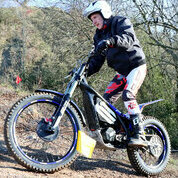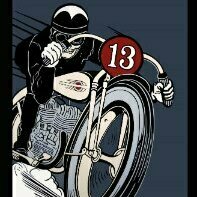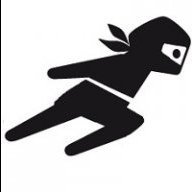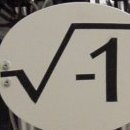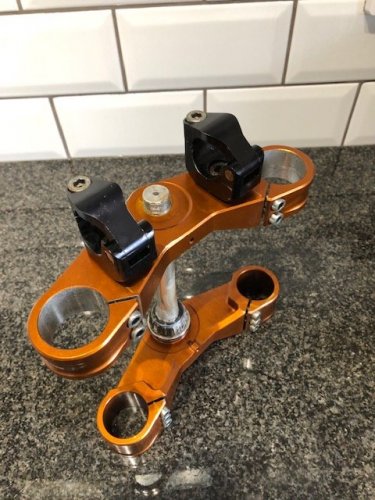All Activity
- Past hour
-
lil started following beta evo 300 4t 2009
-
I have a problem with the gear shifter. When I shift up, it stalls and the shifter gets stuck up and doesn't go down, but from up to down it goes easily. What could be the problem?
- Today
-
lil joined the community
-
hello cona i have the same problem can u tell me how can i changeo or to contact u if its the same problem
-
If it didn't need the ball bearing then they could have made the rod in one piece, if there was no bearing then the ends of the 2 actuator rods would at the very least be rounded and hardened where they contact each other similar to a valve pushrod end. The ball bearing in theory reduces the friction significantly and only needs to spin at half the rate of the 2 rods, it's actually brilliant to have it in there and would serve no purpose to leave it out. How about measuring the straight rod length and have somebody confirm the straight rod part is original 🤓
-
mcman56 started following Yamaha TY175 Clutch Issue
-
The parts list shows one but I don't remember if mine has one. https://www.tytrials.com/trailandtrialsuk/cat_57217-Clutch.html
-
I just wanted to give a shout-out for Custom Hoses (customhouses.co.uk). I ordered a special brake hose at lunchtime on Friday. It was made on Friday afternoon and delivered by Royal Mail on Saturday morning. No connection except as a very satisfied customer.
- Yesterday
-

The Sherco ST250 2.5 Limited Edition 20th Anniversary
godzilla posted an advert in Petrol Trials Bikes
Time Left: 26 days and 14 hours
- FOR SALE
- USED
The Sherco ST250 2.5 Limited Edition 20th Anniversary Trials Bike. I’m the second owner, I purchased the bike from the original supplying dealer two years ago with the intention of getting back into trials, sadly I’m struggling to find time and have only used it for about an hour in the field. These bikes are super rare, I’ve not seen one for sale since I purchased it and there can’t be many about in the condition, it was a southern centre bike and was originally owned by and older rider who retired, it’s clear to see the bike has done no serious work, as far as trials bikes go I consider the condition to be fantastic. The original foot rests which are in lovely condition will be refitted, the titanium ones are not included. The bike comes with its tool kit, headlight and original invoice plus a couple of other bits.3,150.00 GBP
-
Best two trials focused helmets with good venting in my opinion is the Hebo Zone 4 and the AIROH TRR/TRRS. I have both and find them nearly the same over all performance on a hot day if I had to pick one as the best I would lean on the AIROH but only just.
- Last week
-
Did this get resolved as I seem to have the same issue
-
Thanks for that. As I mentioned I added a ball bearing but then the clutch pressure plate did not engage with the central hub. You are right though, every other Yamaha I have owned, and there’s been a few of many types has the ball between the Rod and mushroom. Somethings up that’s for sure
-
Yup. Cap to stop the lights from flickering. Would also provide starting current for the fan if the lights are all on. The fan needs an instantaneous startup current of about 10 Amps but only for a very brief time. It drops to about an amp when it is in constant operation.
-
You need the bearing in there because during operation the T shaped shaft spins relative to the straight shaft, the bearing turns that pressure into point loads in the centre of the 2 shafts, without the bearing between them the shafts will experience considerable more friction. Your clutch is out of engagement by the same diameter as the clutch rod 🤓 add a bearing the same diameter as the clutch rods measure and it should work.
-
Hi. I have an ongoing problem with the clutch on my TY175. In a nutshell when in gear and with the lever in, the clutch is not quite disengaging. There is the correct amount of play at the lever and at the adjuster behind the case on the left hand side. I understand there is a couple of different pushrod options with the TY. Some drawings show a Rod, ball and mushroom and some without the ball bearing. I’ve taken the clutch off and there is no ball bearing. However adding a ball bearing means that the pressure plate sits too high. I'm also led to understand that the washers that sit under the inner and outer baskets are different sizes. Could it be that I have these around the wrong way? If so which one goes where (assuming they are different thickness)? Any advice appreciated as I’ve had this thing apart plenty of times trying to sort it. Thanks
-
Spook joined the community
-
The 4700mF 25V (part# 037.40.022.00.00) capacitor/condenser I made reference to is shown on the homologated version wiring diagram.
-
This is the engine fitted, the exhaust and carb in place. I found a guy who's got a MAR 350 partially broken in parts in his garage but doesn't seem happy to sell the kickstart lever etc. without the whole engine block. 🤨 I still need the kickstart lever and the 2pins Motoplat coilpack to try to start it... from there I'd at least know for sure the engine works and could start looking for a better clutch cable, rear brake cable, silencer etc.
-
Thank Konrad. Better presentation than what I had.😃
-
Hey Tybone, would you be willing to post a photo or two of your TY? I’d love to see it!
-
Dan, I can add some detail about variable-reluctance pickups. The one shown here is from a Chinese pitbike, but it's representative of what's commonly used. The coil has a DC resistance of 145 ohms. Inductance is 63 mH in air. Inductance is 61 mH when contacting steel. (Both measured at 1 kHz.) The magnet has its North pole facing out. The oscilloscope capture shows the waveform when a block of steel is repeatedly brought into contact with the pickup magnet and withdrawn (by hand). Each positive pulse is contact, each negative pulse is the withdrawal. The waveform is asymmetric because the rate of change in the magnetic flux is faster when making contact (magnet pulls on the steel) than when moving the steel away. EDIT: Just noticed that the scope probe I used did not automatically change the display settings. So the vertical axis is 2 volts per division, not 0.2V per division.
-
The spark plug operates off of a pulse generated when a triac trigger dumps the stored charge from a capacitor through the primary side of the ignition coil. Hence the term Capacitor Discharge Ignition. The voltage used to charge that cap is rectified by high voltage diodes in the CDI unit. The timing curve is programmed into a microcontroller in the CDI.module. These are typically run on 5V which will be derived from the 14.9V signal out of the rectifier. So the high voltage side of the CDI that fires the spark plug is isolated from the low voltage side of the CDI.that controls the trigger sense and the firing of the triac. This can be done in several ways but the cheapest and easiest is a transformer. The secondary side of the ignition coil is its own circuit which has to have a complete path back to the common of the ignition coil. As I said in older engines the engine case usually had a hard ground connection. The EVO doesn't and relies on the ground wire at the back of the frame through the engine cases to the cylinder. In my bike with titanium screws and magnesium cases that connection may not be as "hard" as necessary for the spark current. High rise time signals don't always behave the same as dc As for the diagram it's straight from the Beta manual with things not on my bike removed and annotated with my measurements. If your buddy crushed a capacitor on his bike he must be a European spec bike as the cap is used to smooth out the voltage for the lighting system. The US spec bikes don't have that cap. From a purely mechanical perspective what the diagram shows as three stator coils is actually 10 coils for lighting which are probably connected in parallel to supply low voltage high current and two coils for the CDI charge voltage which are likely wired in series to provide the high voltage needed to charge the capacitor in the CDI. The third coil shown on the schematic is the reluctance sensor that triggers the CDI. The face of the trigger sensor looks like it has had contact but I think this is just how it was adjusted at the ignition manufacturer since there are no witness marks on the flywheel to indicate contact. I suspect the construction of the sensor isn't just a magnet and coil but includes a pole piece that allows some flexibility in manufacturing as the pole piece can be ground down to proper clearance after the sensor is encapsulated. If you tried to do that with a rare earth magnet it would shatter. They are notoriously brittle. I plan to get a much better look at all the signals once I have a breakout board and can sniff them while the bike is running. I have several oscilloscopes here but I'll not risk the benchtop equipment playing with unknown voltages. That's why I bought some "sacrificial" cheapo portable scopes. But for now the bike is running as it did without sending the stator for a rewind. Or a $300 replacement. And I learned some stuff. So win-win. I'm just trying to share my learning with my EVO peeps who might not have the experience in electronics I have. I'd love to tear into the CDI module but that would be an expensive exploration. So for now it remains the classic electrical engineering "Black Box Problem" where you can see the goesintas and goesoutas but what happens in the box can only be guessed at.
-
Want the scary news, one way for those parts to collide is the result of excess play in the crankshaft bearings. Grab the crank firmly and see if you can detect any play in the crankshaft bearings or in the taper shaft and and inspect the keyway on the armature to eliminate that as being a problem.
-
Just a few observations and suggestions; 1) your spark plug does not require or use rectified voltage to operate, AC works just fine to produce a spark. 2) that pickup coil needs to be cleaned and the proximity between the pickup and the spinning magnet needs to be as small as possible without ever physically touching. That is likely how you 'fixed' the bike when you removed and reinstalled it. None of those magnet to coil surface interfaces should include rust or metallic debris. 3) the head bolts should provide a solid sparkplug ground. 4) your diagram shows an ignition system with 2 coils, one coil dedicated to spark and the other to 12volt accessories such as LED lights and fan motor. Your photo appear to show a multi phase stator coil 🤔 you might not have the correct wiring diagram or the schematic displays the stator coils in a curious fashion. ... if the bike runs and you want to test the alternator outputs, best is to use an oscilloscope. add: my riding partner crushed a small capacitor that is wired up near the headlight and steering stops crushed it. You might want to check that part assuming his EVO is the same as your EVO add: the black box module almost certainly adjusts spark advance timing and that is likely where the biggest difference is between the various modules. ... timing of the spark is almost the only thing that can be adjusted.
-
I also ride mountain bike ( EMTB to be honest ) and when they became avalable I bought a MIPS rated helmet, mabe that's why I'm '' suffering '' so much with my trials helmet to the point that I'm looking at a new one with more ventilation.
-
Hmmm looking at closeups of the other connector and I noticed the water seal on the back of the high voltage wire (Red/White) to the coil looks less than perfect.
-
Is a bicycle helmet as safe as a motorcycle helmet? Probably not. But modern MIPS-rated helmets are pretty good. See: https://www.helmet.beam.vt.edu/bicycle-helmet-ratings.html It may partly depend on the ambient temperate at which you ride. I know that if my brain gets overheated I don't make good decisions, and am more likely to actually need a helmet. Assumption of personal risk is a very personal decision.
-
I’m not sure I agree with an MTB helmet so I’m putting this out there for consideration. There’s an old saying that goes like this, “Buy the best helmet you can afford!”. The reason being is that you’re playing Russian roulette with your brain. MTB helmets aren’t subject to the same testing standards as DOT helmets are. Yes, trials riding isn’t as fast as street or MX but what happens if you go down and the bike lands on your head that’s next to a tree, rock or hard pack. The shells on MTB helmets aren’t as strong as a rated helmet because MTB bikes weigh a fraction of what a motorcycle weighs.
-
Recent Topics
-
Classifieds
-
TC News Feed


